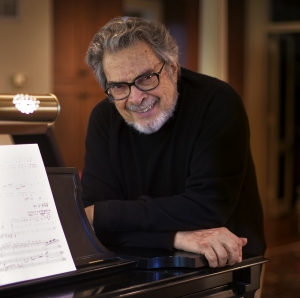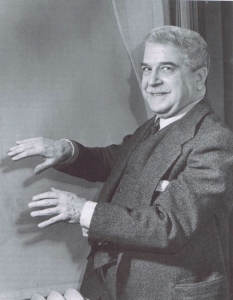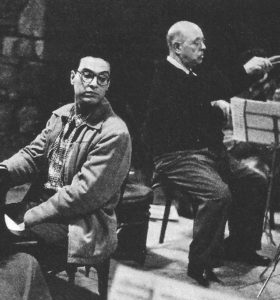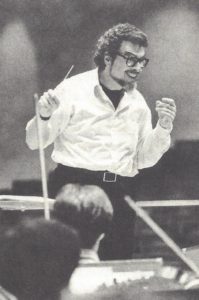“He was already well on his way to becoming a curmudgeon at the age of 22. But he encouraged all of us to grow and opened doors that would have otherwise been closed.” This combination of humor and affection in Fleisher’s words is characteristic of the friendship that bound him to Istomin for sixty years.
In his memoirs, My Nine Lives, and in an interview with James Gollin, Fleisher said: “It was at that time, around 1947-48, that Eugene really tried to move into a role as my mentor and started broadening my musical horizons with all kinds of music I’d never heard before. He introduced me to Ravel’s L’enfant et les sortilèges and to Couperin’s Leçons de ténèbres. I was exploring a different side of music, feeling its sensuality, its perversity, its rich, dark underbelly. He had just told me: ‘Listen to this stuff, it’ll knock your socks off’.”
Istomin had also introduced him to Vladimir Horowitz, which had upset his master Schnabel but which was for him a hugely exciting experience, revealing a whole world of color, sensuality, and delicious rhythmic instability which would be of invaluable use to him in certain repertoire.
Torn between Schnabel and Serkin
As Fleisher had studied with Schnabel and Istomin with Serkin, jokes about the rivalry between their two masters were a recurring topic of amusement: “Eugene used to poke gentle fun at Schnabel due to his tendency to rush and to land on wrong notes!” Fleisher, for his part, felt a sense of superiority: “Of course coming from Schnabel, I felt I had the privileged viewpoint. I had had my Word straight from the master. The others had formidable techniques, brilliant talents. But the ability to get to the heart of a piece – that was mine.” This conviction invariably piqued Istomin, who immediately stood up for Serkin!
Fleisher was quite surprised to learn many years later that in fact Istomin was secretly a great admirer of Schnabel. He had listened to all his records and attended many of his concerts – and Schnabel had been both a source of inspiration and a precious counterbalance which allowed him a breath of liberty from Serkin’s unbending rigor. However, he never wanted to admit this to Fleisher, as it would have made him too happy!
Playing ping-pong
Ping-pong was another passion they shared. Istomin was a good sparring partner for Fleisher, who played remarkably well. They often met in a small hall on 96th Street for endless games in which other musicians sometimes joined in. Istomin did his best to defend himself, but nearly always ended up losing, a fact which did not alter his good humor.
Friendship and solidarity
Fleisher had an exceptionally successful debut. Although three years younger, he played for the first time with the New York Philharmonic only one year after Istomin, performing the Brahms Concerto No. 1 under Pierre Monteux in November 1944. Over the next three seasons, the number of concert engagements and subsequent success increased steadily, but gradually the situation deteriorated. He had accepted too many engagements with a repertoire which was too broad, and was unable to meet the demands which they required. The reason was simple and he readily confessed it: “All those years of practice had not allowed me to date girls or anything. I finally discovered them, didn’t practice and my career dissipated.” Meanwhile, Schnabel told him that he would no longer give him lessons because it was time for him to carve out his own path.
It was a lot to deal with at the same time, especially since Marjorie Weitzner, with whom he was madly in love, was leading him on. Fleisher was on the verge of desperation, but fortunately, his OYAP friends were watching over him. Kapell urged him to enter the prestigious Queen Elizabeth Competition of Belgium with the support of the Department of State, and Istomin offered to accompany him to Paris in the spring of 1950. The change of environment proved to be salutary. He could enjoy his freedom and the pleasures of Parisian life, while at the same time buckling down to work at the piano, and won the Competition in the spring of 1952 in a brilliant victory.
The following year, Istomin offered Fleisher an exceptional opportunity. After succeeding Alexander Schneider as artistic director of the Prades Festival, he had to assemble an orchestra, choose the soloists and establish the program with Casals. This also meant juggling with the availability of the guest musicians. Serkin had come in May to finish recording the Beethoven Cello Sonatas with Casals, but was extremely busy in June and could not be in Prades to rehearse Beethoven’s Concerto No. 2. Istomin suggested that Fleisher step in and replace him. Almost sixty years later, Fleisher was still grateful to Istomin for having given him the chance to play under Casals, even if it had only been for the duration of a rehearsal!
Critical listening and psychoanalysis
In the early 1950s, Istomin continued from time to time to act as a mentor and criticize his friend’s playing. Fleisher told James Gollin with amusement about the time Istomin once indulged in a daring psychoanalytical analysis: “I played a phrase that went up, and as I went up I felt that somehow I’d ventured into inner air and therefore made a kind of diminuendo. And Eugene castigated me. Very seriously. He literally made the suggestion that I should perhaps go seek counseling. That I should perhaps seek help.” It was not normal, Eugene was insisting, to get softer in a phrase that went up. “The implication was that this was an erectile dysfunction. And he really put the fear of God Sigmund in me! It is easy to smile now at this innocent venture into Freudianism. But the 1950’s, after all, was the era during which psychoanalysis loomed largest in American cultural life and the Unconscious reigned supreme over the arts.”
Musical collaborations
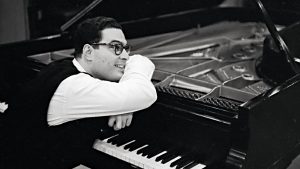 In 1956, Eugene Istomin and Leon Fleisher were both invited to perform in an important all-Mozart concert with the San Francisco Symphony conducted by Enrique Jorda, who was not exactly well-known as a great Mozartian. It fell to Istomin to play the Concerto No. 9 K. 271 and Fleisher the Concerto No. 25 K. 503, before they joined forces for the Concerto for Two Pianos K. 365. During the rehearsal, Fleisher looked for Istomin’s eyes as his cue to come in, but as the score was up on the music rack, all he could see were two thick, frowning eyebrows shaped like great circumflexed Gothic arches. He was so taken aback and
In 1956, Eugene Istomin and Leon Fleisher were both invited to perform in an important all-Mozart concert with the San Francisco Symphony conducted by Enrique Jorda, who was not exactly well-known as a great Mozartian. It fell to Istomin to play the Concerto No. 9 K. 271 and Fleisher the Concerto No. 25 K. 503, before they joined forces for the Concerto for Two Pianos K. 365. During the rehearsal, Fleisher looked for Istomin’s eyes as his cue to come in, but as the score was up on the music rack, all he could see were two thick, frowning eyebrows shaped like great circumflexed Gothic arches. He was so taken aback and 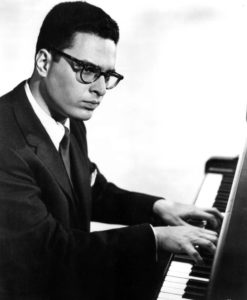 fascinated that he forgot to come in. Istomin scowled even more and took up the theme one octave above, followed by one below, without the conductor even noticing. It was a moment of complicity and fun. Fortunately, they regained their seriousness for the concerts! The Concerto No. 25 remained Fleisher’s favorite Mozart concerto, of which he gave many superb performances as well as a recording with Szell. It is worth noting that in the cadenza of the first movement, Fleisher adopted, with some modifications of his own, the cadenza which Istomin had written, but never used, since he had abandoned the idea of performing this concerto in public.
fascinated that he forgot to come in. Istomin scowled even more and took up the theme one octave above, followed by one below, without the conductor even noticing. It was a moment of complicity and fun. Fortunately, they regained their seriousness for the concerts! The Concerto No. 25 remained Fleisher’s favorite Mozart concerto, of which he gave many superb performances as well as a recording with Szell. It is worth noting that in the cadenza of the first movement, Fleisher adopted, with some modifications of his own, the cadenza which Istomin had written, but never used, since he had abandoned the idea of performing this concerto in public.
In September 1962, Fleisher and Istomin joined Gary Graffman and William Masselos for the inaugural concerts of the Avery Fischer Hall at Lincoln Center. They played the little Bach Concerto for 4 Keyboards BWV 1065 with the New York Philharmonic conducted by Bernstein.
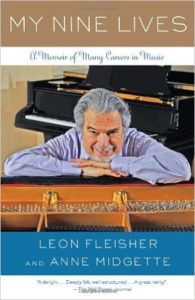 Istomin was deeply affected by the tragedy which had successively struck down Fleisher and Graffman, two of his closest friends: the loss of the ability to use their right hand, which brought into question their entire lives. In some way, he felt a sense of guilt that he was able to continue playing and performing. Fleisher’s reconversion into a left-handed pianist, conductor and great pedagogue amazed him. Istomin thought that he would have given up all professional musical activity and turned to other fields if something like this had ever happened to him. In 1978 and 1980, Istomin was delighted to come and play with the Annapolis Symphony under Fleisher, who was at that time its music director. In January 1997, he was in Paris when Fleisher played the Brahms Concerto No. 1 with Giulini and the Orchestre de Paris, which he had performed again for the first time a few months earlier in San Francisco. Hearing Fleisher perform the most emblematic work of his repertoire once more – a work which he had despaired of ever playing again- was a moment of intense emotion for Istomin, yet at the same time one of deep anguish, as Fleisher’s right hand often struggled to get through the difficult passages. Istomin could not bring himself to greet his friend backstage after the concert.
Istomin was deeply affected by the tragedy which had successively struck down Fleisher and Graffman, two of his closest friends: the loss of the ability to use their right hand, which brought into question their entire lives. In some way, he felt a sense of guilt that he was able to continue playing and performing. Fleisher’s reconversion into a left-handed pianist, conductor and great pedagogue amazed him. Istomin thought that he would have given up all professional musical activity and turned to other fields if something like this had ever happened to him. In 1978 and 1980, Istomin was delighted to come and play with the Annapolis Symphony under Fleisher, who was at that time its music director. In January 1997, he was in Paris when Fleisher played the Brahms Concerto No. 1 with Giulini and the Orchestre de Paris, which he had performed again for the first time a few months earlier in San Francisco. Hearing Fleisher perform the most emblematic work of his repertoire once more – a work which he had despaired of ever playing again- was a moment of intense emotion for Istomin, yet at the same time one of deep anguish, as Fleisher’s right hand often struggled to get through the difficult passages. Istomin could not bring himself to greet his friend backstage after the concert.
In 2000, Fleisher came and performed for Istomin’s 75th anniversary. The following year, he participated in the Great Conversations initiated by Istomin at the Library of Congress. It was their ultimate collaboration, with a complicity which had remained intact over the years.
Concerts
1956. San Francisco. Mozart. Concerto No. 9 K 271 (Istomin), No. 10 K. 365 (Istomin & Fleisher) and No. 25 K. 503 (Fleisher). San Francisco Symphony, Enrique Jorda.
1962, September 26. New York, Avery Fischer Hall. Bach, Concerto for 4 Keyboards BWV 1065. Leon Fleisher, Eugene Istomin, Gary Graffman, William Masselos. New York Philharmonic, Leonard Bernstein.
1978, October 15. Maryland Hall. Beethoven, Concerto No. 4. Annapolis Symphony Orchestra, Leon Fleisher
1980, October 18. Maryland Hall. Tchaikovsky, Concerto 1. Annapolis Symphony Orchestra, Leon Fleisher
Document
J.S. Bach. Sheep May Safely Graze (arr. Egon Petri). An emblematic piece in Leon Fleisher’s repertoire.

